Research into the Toba caldera and its super-eruption 75,000 years ago shows that magma continued to flow out of the volcano for thousands of years after the main eruption event. Plus, magma and volcanoes throughout our solar system as well as our weekly What’s Up segment.
Podcast
Transcript
Hello and welcome to the Daily Space. I am your host Dr. Pamela Gay.
And I am your host Beth Johnson.
And we are here to put science in your brain.
When we were putting this episode together last night, we realized that we had volcano and magma stories for days and days and maybe centuries, so welcome to our accidental volcanoes episode, which starts with Mercury.
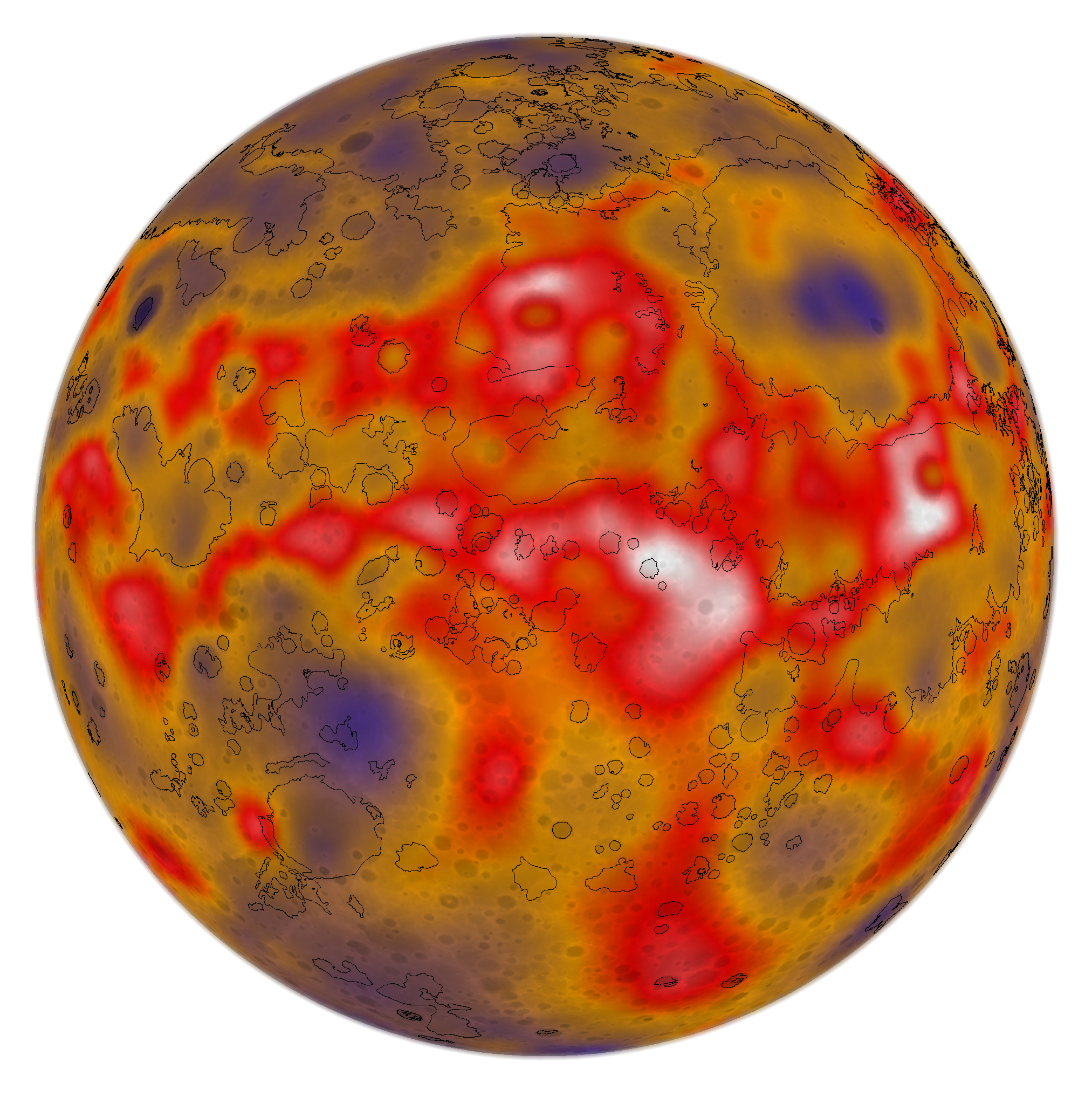
I particularly like this first story because it shows that sometimes amazing research can come even a decade after data has been collected. Researchers led by Thomas R. Watters have combined images, topography, and gravity data obtained by NASA’s MESSENGER mission to model how that small world’s crust is moving.
Here on Earth, our planet’s surface is divided up into a lot of different plates that move over, under, and around each other while floating on the liquid plastic mantle. Volcanoes crop up along the plate boundaries as well as faultlines that can appear as collections of cracks in the Earth when seen from above.
On Mercury, there aren’t plates; there is a plate – the singular crust that surrounds Mercury’s shrinking interior. It was expected that faults would be random in their locations. MESSENGER discovered, however, that the faults cluster in belts. According to Watters: On a one-plate planet like Mercury undergoing mostly global contraction from cooling of the interior, the concentration of large faults into elongated belts is not expected. Some process in combination with global contraction is influencing the grouping of the faults.
By modeling the surface and interior together, the team was able to sort out that the faults are clustered where Mercury’s uneven crust is thickest and the strain on the crust is greatest. This kind of intra-plate fault also happens on Earth, with the New Madrid fault in the Midwest of the U.S. being one of the most famous. That fault triggered massive quakes in Missouri in 1811 and 1812.
The discovery of these clustered faults and the new understanding that they are tied to Mercury’s crust and shrinking interior makes me wish we could drop some seismometers on Mercury to see if that complex world is tectonically interesting.
In general, we struggle to understand what other worlds may be shaking, rattling, and erupting. Jupiter’s moon Io clearly has active volcanoes. Enceladus has geysers. We’ve seen these features doing their thing, but other worlds are more secretive in their geologic activity. Venus, for instance, may have active volcanoes, but if it does, they are hidden beneath a thick layer of clouds that makes direct imaging all but impossible.
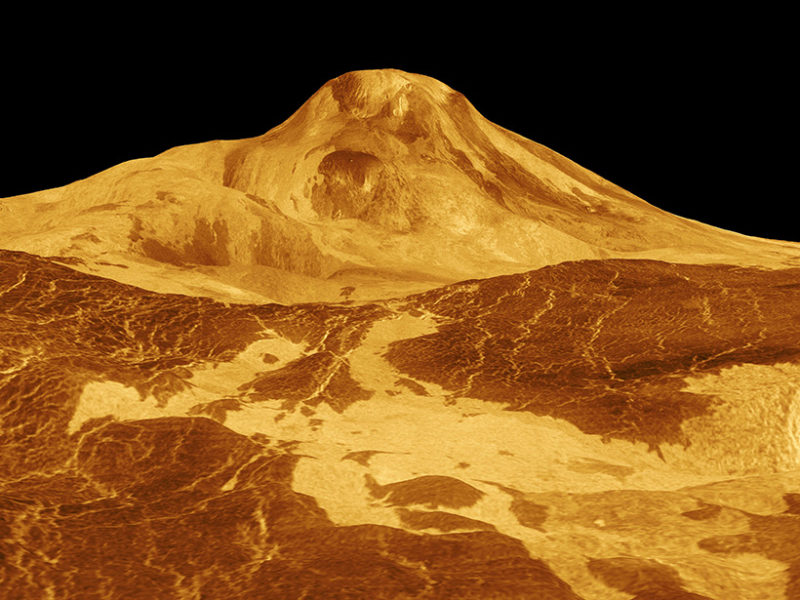
Where direct imaging is impossible, radar can reflect back the necessary data to understand what is going on. Back in the 1990s, the Magellan spacecraft mapped most of Venus, and now Pierro D’Incecco and his collaborators have used not just the shape profiles recorded in these maps but also the reflectivity of the surface to try and understand how different volcanic flows are layered on one another and how they have aged.
Different kinds of minerals absorb and reflect radar light in different ways and this quality is called radar emissivity. This information – the emissivity – is recorded along with the shape of the surface being radar mapped. D’Incecco and his team’s work indicates that over time, the emissivity of lava rock changes as it is exposed to the caustic weather of Venus.
In a new paper appearing in JGR Planets, they look at lava flows on Sapas and Ozza Montes and find that these flows have emissivities consistent with them being well-weathered by time, and they suggest that further study of other regions may be able to reveal ongoing volcanism. The catch is that we don’t know if we have all the data we need from Magellan. If we don’t, there is the hope of getting new and better data in the future when ESA’s EnVision mission and NASA’s VERITAS mission get to Venus in the future.
Volcanoes are remarkably common. They act as pressure release valves to rocky worlds, as magma, ice, and other materials escape from their heated interiors like steam from an Instant Pot. Not all volcanoes are made the same, however, and as we look across our world and others we are realizing that super-eruptions that rewrote entire regions can occur.
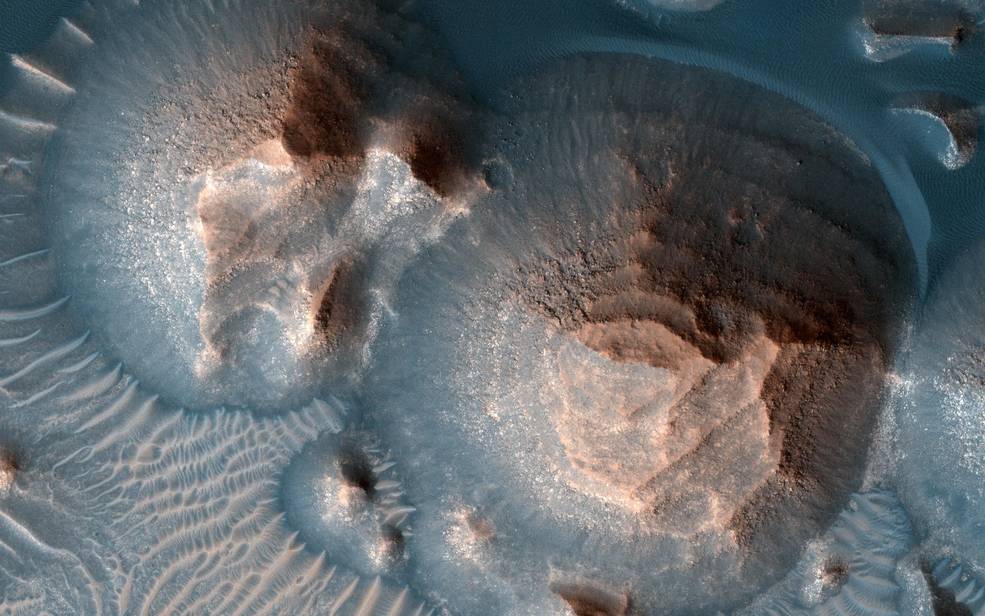
On Mars, researchers led by Patrick Whelley have documented a history of explosive eruptions on the Arabia Terra that blanketed the region in layers of ash and aluminum-rich minerals. This ash is 100-1,000 meters deep and is likely the result of between 1,000 and 2,000 eruptions that occurred over 500 million years. According to Whelley: Each one of these eruptions would have had a significant climate impact — maybe the released gas made the atmosphere thicker or blocked the Sun and made the atmosphere colder. Modelers of the Martian climate will have some work to do to try to understand the impact of the volcanoes.
Most fascinating to me is the timing of this volcanism. According to their paper, it took place during the late Noachian and early Hesperian periods. The Noachian period was when Mars was getting bombarded with small bodies like asteroids and comets, and the atmosphere of Mars is thought to have been thicker and warmer than it is today. As Mars transitioned from the Noachian period to the Hesperian, the world underwent widespread volcanic activity and experienced canyon-carving flood events. These eruptions, and their climate-changing ash, would have been part of the geophysics that shaped this warm, wet, and catastrophic period in Mars history – the part of its history many of us are most interested in understanding.
Now, I want a time machine. Failing that, more rovers, please? There are volcanoes to explore and geologic histories to study.
Hey, it’s a good thing we don’t have huge volcanic eruptions on Earth, right? Wait… what? We do? Crud.
Oh, and new research from an international team of scientists has discovered that supervolcanoes here on Earth can remain active and threatening for thousands of years following an initial super-eruption. That’s great.
Seriously, though, I’m sure a lot of our listeners and viewers are familiar with supervolcanoes here on Earth. After all, we can’t go more than a month or two without someone trying to tell us that Yellowstone is in imminent danger of erupting and wiping out the U.S. farming communities in the midwest with the ash fallout. Yes, that’s a real thing that could happen. It has happened before. In fact, the ash from an eruption of the Long Valley Caldera here in California was found as far away as Nebraska. It’s a huge layer called the Bishop Tuff, and it is all over the western United States. And eruptions from Yellowstone are much larger than Long Valley’s.

So worrying about Yellowstone erupting is a completely legitimate worry, just not a “tomorrow it will happen” worry.
Before we get into this new research, which makes supervolcano eruptions even scarier, let’s talk basics. What makes a volcano “super”? An eruption that contains at least 1,000 cubic kilometers of material. How often does this type of eruption occur? Well, geologically speaking, they’re pretty frequent. But from the perspective of humanity, they’re rare, happening once every 17,000 years or so. The last one occurred over 25,000 years ago in New Zealand. These types of eruptions can cause huge issues, though, affecting climate as well as destroying life and rendering the ground temporarily infertile.
Supervolcanoes can occur over both hotspots like Yellowstone and in subduction zones, such as the one at Lake Toba in Indonesia. That particular eruption occurred about 75,000 years ago and wiped out most of humanity at the time. It also led to a volcanic winter that dropped the worldwide average temperature about 4˚C. The ash from that eruption was found as far away as East Africa.
Now, scientists studying that supervolcano eruption have found that the volcano continued to erupt. They examined minerals such as feldspar and zircon (my personal choice in this year’s Mineral Cup) and analyzed the gas inclusions of argon and helium. Lead author Martin Danišík explains: Using these geochronological data, statistical inference, and thermal modeling, we showed that magma continued to ooze out within the caldera, or deep depression created by the eruption of magma, for 5,000 to 13,000 years after the super-eruption, and then the carapace of solidified left-over magma was pushed upward like a giant turtle shell.
Well, that’s slightly horrifying.
Danišík goes on to further explain: The findings challenged existing knowledge and studying of eruptions, which normally involves looking for liquid magma under a volcano to assess future hazard. We must now consider that eruptions can occur even if no liquid magma is found underneath a volcano – the concept of what is ‘eruptible’ needs to be re-evaluated.
So the initial supervolcano eruption is just the beginning of the threat to life on Earth. Things will not settle down quickly, and more eruptions will lead to more loss of life and land and temperature changes, and just general chaos. And this is why when people get all worked up about Yellowstone, geologists get frustrated. Sure, it’s worrying, but the chances of an eruption happening in our lifetime are slim to none.
As Pamela says, the Universe is trying to kill us. Just not right this second.
When attending conferences, it is often possible to look at groups of scientists and guess what their specialty might be. The astronomers are more likely to be in suits or at least in business shirts and slacks. Theorists have that pale color and attire normally associated with computer folks. And geologists often look ever ready to go off into the mountains and have the tans of people not afraid of daylight.
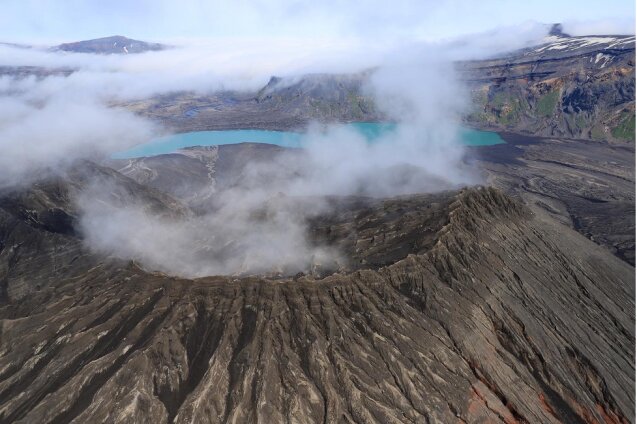
In the midst of all these groups are the often fit and fearless volcanologists. They are like the Indiana Jones of geologic data, and the insane lengths they go to often go unacknowledged. One graduate student, however, may change all that.
Columbia Climate School Ph.D. candidate Jasper Baur is sharing out his experience trying to uncover the secrets of Alaska’s volcanos. In an online essay, he writes from the Steadfast, a 108-foot crabber turned research ship, that: …this is my first time in Alaska. It is also my first time living on a research vessel, flying in helicopters, riding an ATV, eating fresh halibut caught that very afternoon, and being chased by a herd of bulls. While all of these firsts are stories unto themselves, on July 15th, I entered my first caldera at Okmok Volcano on Umnak Island located approximately 4,200 miles away from New York in the Aleutian Island volcanic chain.
In an article we’ll link to from DailySpace.org, Jasper describes how he explored the six-mile across Okmok Caldera, on foot, to collect samples of the carbon dioxide it was emitting.
I am totally a volcano stan, but I would not want to enter the volcano that may be responsible for the collapse of the Roman Republic without Star Trek-style transporter technology to zap me out as needed. In 43 BCE, Okmok had a massive eruption that may have both created that six-mile across crater rim and released so much material into the Earth’s atmosphere that it caused a volcanic winter that triggered crop failures and subsequent famine and related disease. While it hasn’t had that scale of an eruption in the past 2000-ish years, it is still active, and in 2008 built up a massive ash cone named Ahmanilix.
From inside this crater, Jasper was able to not only collect gases but also study how erosive processes have carved that young ash cone to appear to be covered in veins of cracks, such as we’re more used to seeing eroded over thousands of years into sandstone rocks and other geologic features. These nature-made designs demonstrate how the stuff of volcanoes is rapidly worn by the forces of rain, wind, and snow.
By understanding how the appearances of volcanoes evolve, we can understand how their outgassing changes and how everything shifts and tilts and erodes, and grows all at the same time inside these deadly environments. This is multivariable science set to survival level difficulty, but if researchers like Jasper can tease apart all these factors, maybe, just maybe, they’ll be able to piece together predictive models that will help us understand when volcanoes may be gearing up to erupt.
It’s dangerous work, and I’m amazed at the physical and mental stamina this work requires. I look forward to watching Jasper’s work from the comfort of my desk, and I can only hope that I, in my astronomer’s suit jacket, will one day meet him at a conference.
What’s Up
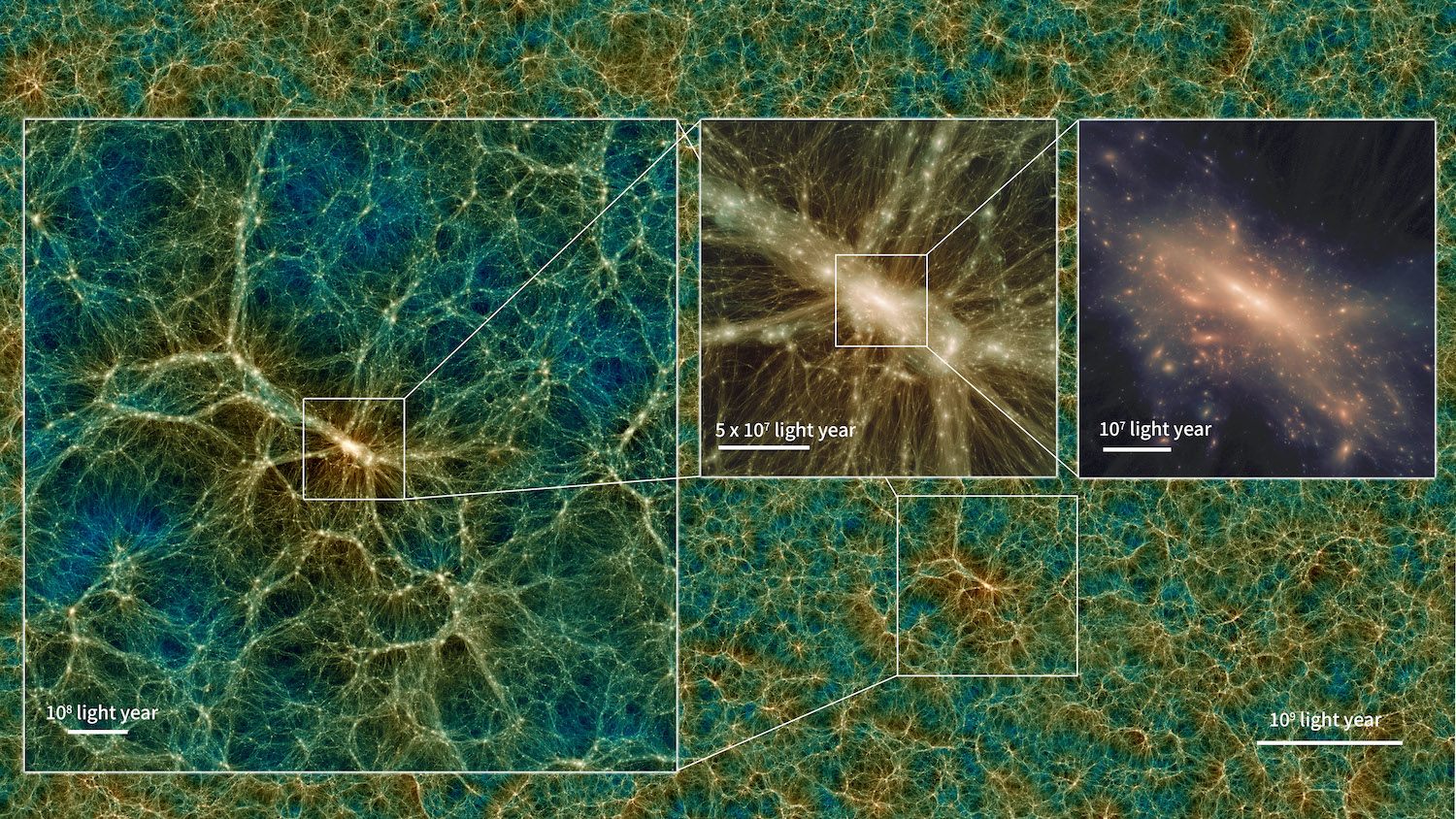
Right now, a lot of the people watching this can’t easily see the night sky. To all of you watching on Now Media in Houston and Atlanta, you are awesome but your skies are not.
The loss of dark night skies is a global problem, and it has made astronomers think long and hard about how they can create a universe in a box, but not just a universe that you can explore to see what is in the sky. Things like that exist; we recommend the software Stellarium. No, these researchers wanted to create a universe in a box that allows you to explore space and time and catch the details of how our reality has gone from a mostly smooth cloud of light and particles to the structured glory we see today.
If you want to see the sky as it is, get Stellarium. If you want to explore space and time, the National Astronomical Observatory of Japan has released Uchuu, which means “outer space”, the largest and most realistic simulation of the Universe to date. Containing 2.1 trillion particles that can evolve into everything we see, the computational cube they explore is 9.63 billion light-years on each side. Designed for researchers, this cloud-based simulation is free for all, and if you or your teenager are starting to think about science fair projects that combine space and computing, this model might be something to explore.
While major cities are pretty terrible for most kinds of observational astronomy, bright objects are still always possible targets, and even the seemingly best-known objects often have surprises from the careful observer.
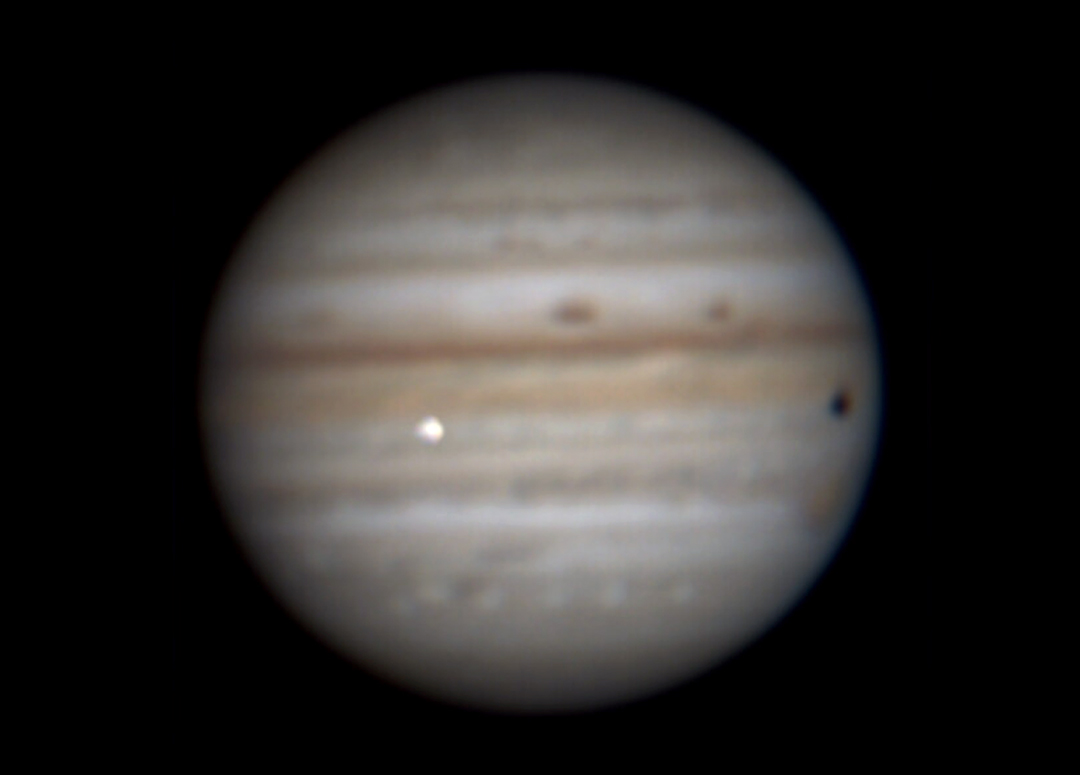
On September 13, José Luis Pereira of Brazil observed Jupiter during some pretty iffy weather conditions just in case something interesting happened. And it looks like he was able to catch the bright flash of some object – rock or ice or a combo of both – impacting Jupiter’s cloudy atmosphere.
We used to think that these impacts were extremely rare, but as the cost of digital cameras has dropped, amateur astronomers have discovered more and more of these impacts. There is also bespoke software for finding these flashes – DeTeCt by Marc Delcroix. If you are the proud owner of a telescope and camera of any kind, this kind of science may be for you. We have links to the needed tools on our website, DailySpace.org.
While Jupiter is getting possibly hit with rocks, here on Earth, we’re all about the Sun and the changing of the seasons. If climate change will let the seasons change. That being said, you might not know exactly what having seasons actually means.
At some point in the vastness of geologic time, the Earth was hit by a gigantic space rock which knocked it off of a straight up and down orientation to one where it is pointing roughly 23.5 degrees off of vertical. This value varies slightly between 21 and 24 degrees over a period of tens of thousands of years, not because the Earth is tilting but because the distribution of ice at the poles varies, and all of that ice weighs enough to change the Earth’s gravity.
The Earth’s orbit is also eccentric, meaning that the highest and lowest points of its orbit around the Sun are slightly different. Or, put even more simply, it’s not quite a perfect circle but rather just a tiny bit of an oval.
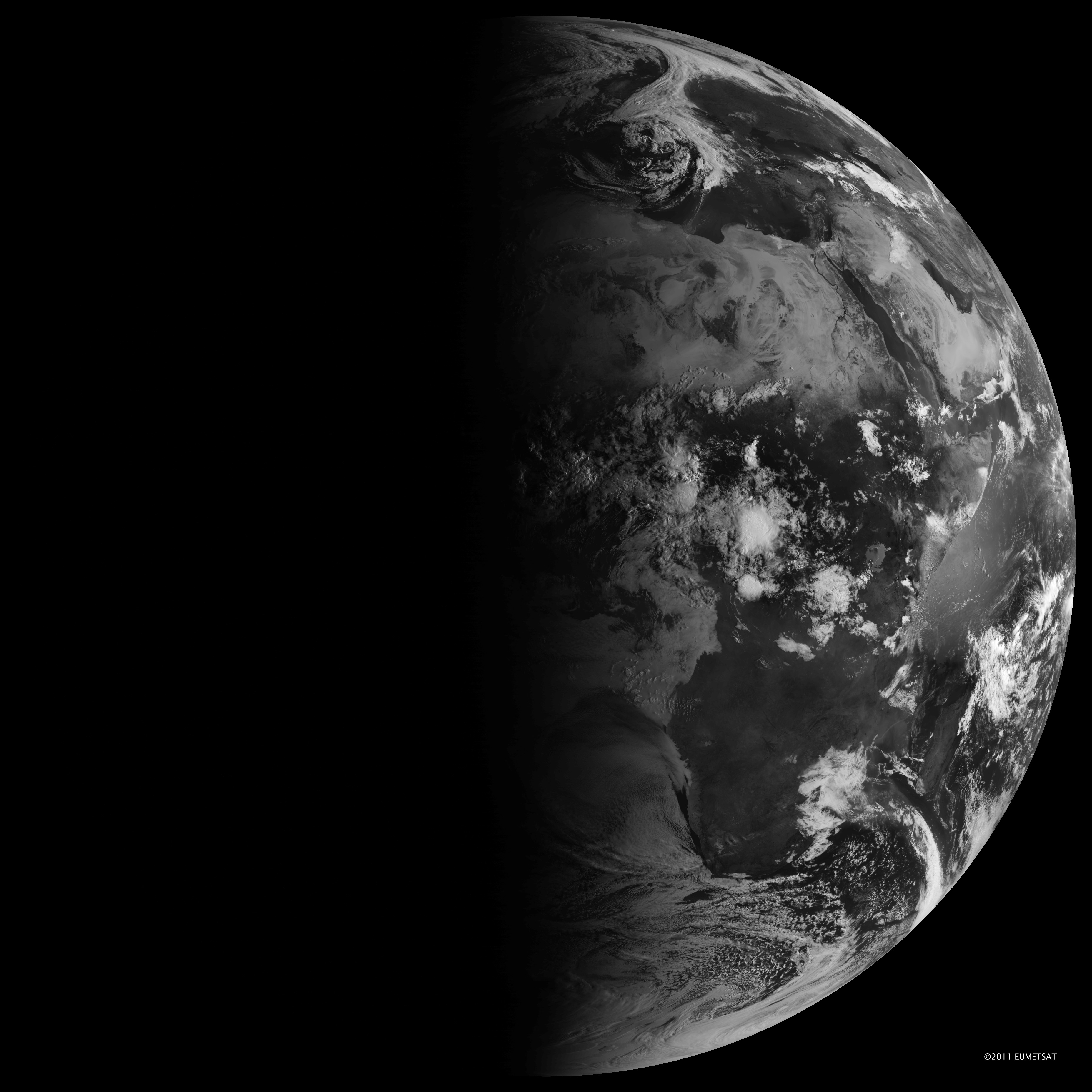
Now, the effect of the tilt is that different portions of the Earth’s surface receive more or less solar heating depending on the time of year in a cycle from roughly July to January. This is why in one half of the Earth it is cold, while the other half is hotter, winter versus summer.
At two points in this yearly cycle, the Sun crosses the Earth’s equator so that both hemispheres receive the same amount of solar energy, making day and night have an equal length everywhere. This is called an equinox, which is Latin for “equal night”. In the Northern Hemisphere, the Autumnal Equinox happens on September 22 at 3:21 p.m. EDT. This means that the nights are getting longer, which is great for people who want to look at the stars.
Next week, we’ll talk more about just what stars you can see this time of year. Unless our writer Erik has bought another lens or telescope, in which case we’re all going to be plagued by clouds.
This has been the Daily Space.
You can find more information on all our stories, including images, at DailySpace.org. As always, we’re here thanks to the donations of people like you. If you like our content, please consider joining our Patreon at Patreon.com/CosmoQuestX.
Learn More
Mercury’s Surface Faults Cluster in Thickest Crust
- Smithsonian press release
- “Mercury’s Crustal Thickness and Contractional Strain,” Thomas R. Watters, Peter B. James, and Michelle M. Selvans, 2021 August 30, Geophysical Research Letters
New Approach Changes How We Analyze Venusian Volcanoes
- Is Venus Volcanically Active? New Approach Could Provide an Answer (Eos)
- “The Geologically Supervised Spectral Investigation as a Key Methodology for Identifying Volcanically Active Areas on Venus,” P. D’Incecco et al., 2021 July 12, JGR Planets
NASA Confirms Volcanic Eruptions in Arabia Terra on Mars
- NASA Goddard press release
- “Stratigraphic Evidence for Early Martian Explosive Volcanism in Arabia Terra,” Patrick Whelley et al., 2021 July 16, Geophysical Research Letters
Supervolcanoes Active for Thousands of Years After Erupting
- Curtin University press release
- “Resurgence initiation and subsolidus eruption of cold carapace of warm magma at Toba Caldera, Sumatra,” Adonara E. Mucek et al., 2021 September 3, Communications Earth & Environment
Geologist Details Fieldwork in Alaskan Caldera
- BLOG: A Journey Into an Alaskan Volcano (Columbia Climate School)
NAOJ Releases New Universe Simulation to Explore
- Center for Computational Astrophysics press release
- “The Uchuu simulations: Data Release 1 and dark matter halo concentrations,” Tomoaki Ishiyama et al., 2021 June 22, Monthly Notices of the Royal Astronomical Society
Astronomer Catches Potential Collision With Jupiter
- Amateurs Spot New Impact Flash at Jupiter (Sky & Telescope)
Autumnal Equinox Coming Up on September 22nd
- Why Earth Has 4 Seasons (EarthSky)
Credits
Written by Pamela Gay, Beth Johnson, and Erik Madaus
Hosted by Pamela Gay and Beth Johnson
Audio and Video Editing by Ally Pelphrey
Content Editing by Beth Johnson
Intro and Outro music by Kevin MacLeod, https://incompetech.com/music/


 We record most shows live, on Twitch. Follow us today to get alerts when we go live.
We record most shows live, on Twitch. Follow us today to get alerts when we go live.